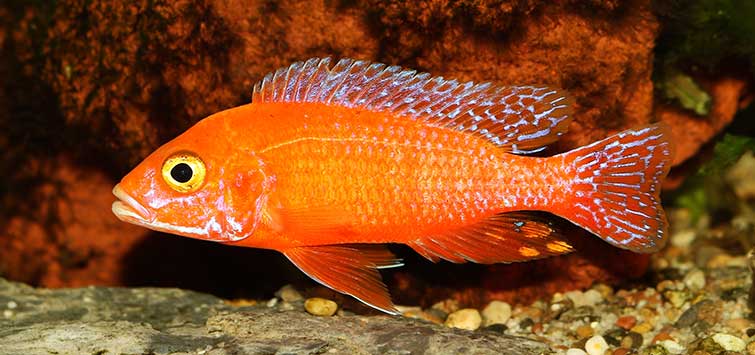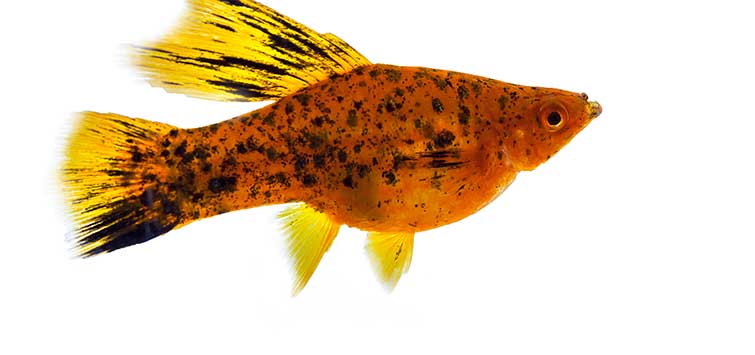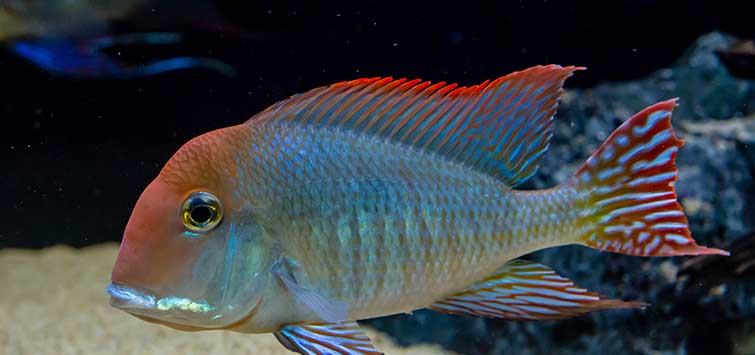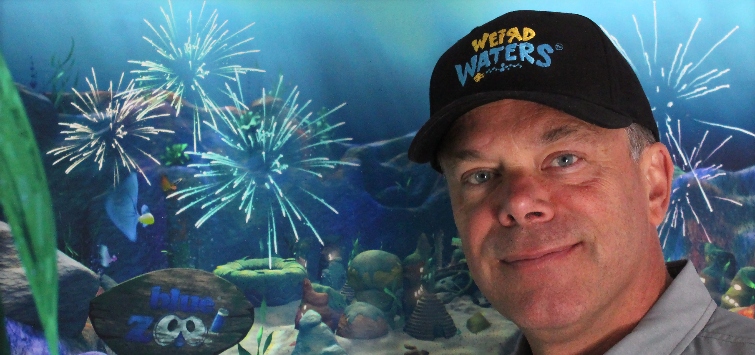How It All Begins…
Author: Nathan Berman
Third-grader Nathan Berman hasn't been an aquarist for very long, but after breeding his African cichlids he has already experienced the allure of fishkeeping.
The Fish Auction
The auctioneer raises a bag of fish high up in the air asking, “Who will give me a buck for this trio of red zebras?” I raise my number. He points at me, “One dollar.”
He then switches his attention to another man. “Two dollars,” he says.
Then, “Three dollars,” pointing at me again since my hand never lowered.
“Four dollars,” the other man bid again.
Finally, “Five dollars!” he says, pointing at me for the third time.
The other guy knows I’m serious, since my hand is raised high. “Five dollars going once…going twice…going three times—sold for five dollars to number 22!”
Number 22 was me, Nathan Berman, a third grader in Grand Rapids, Michigan last March at our Grand Valley Aquarium Club spring auction.
A Young, Enthusiastic Hobbyist
I have a 20-gallon aquarium that I have had for as long as I can remember. It usually contains tetras, my prized 5-inch red-tail shark, a 10-inch pleco, and a couple giant danios. Then about a year ago I saw an ad for a swap meet for the local aquarium club, and an interest in learning more about fish was kindled. I saved up my money to buy a 150-gallon tank, which I stocked with Lake Malawi cichlids. After transferring my shark and pleco, I began my African cichlid hunt at auctions and a regional shop hop across the state.
Once I had everything ready in the new tank, I first added a trio of adult 5-inch Melanochromis cyaneorhabdos (new mainganos) and six 3-inch Pseudotropheus red OB zebras (three of them with albino genes) from the big club semiannual auction. Then I added a trio of 2- to 3-inch Pseudotropheus flavus from a mini auction. I transferred my giant danios from my 20-gallon tank and bought another pair. Then on the shop hop I added a pair of 2½-inch bumblebee cichlids, two 2½-inch yellow-dorsal Labidochromis caeruleus, a pair of Aulonocara nyassae, and a breeding pair of Pseudotropheus minutus.
Babies!
I never thought that I would have any spawns in my 150-gallon display tank because of my belief that Malawi cichlids are extremely aggressive. But boy was I blown away by what happened next!
Last July I invited my friends Danny and Dylan over to see my fish and help me clean the tank. Danny asked inquisitively, “What type of fish is that?” pointing at a crevice in a large rock. I exclaimed, “Wow! Babies!” I ran upstairs shouting “babies!” at mom, dad, and my little sister. I was dazzled by the moment, and I felt a motor in my head generating happiness. I spent the rest of the day perched in a chair watching the tank. My first spawn ever! My breeding pair of P. minutus was in a separate 10-gallon tank, but I wasn’t having any luck there. I was so excited I called my relatives across the country, since so many in my family had helped me save money for the tank.
Keeping Them Alive
Now I was concerned whether my first spawn would survive. I didn’t sleep well because I was worrying about them. The next day Danny and Dylan came over early, eager to see if my new fish were still alive. The fry darted out to snatch up food and then quickly disappeared in the many crevices of rocks lining the bottom of my tank. Next we tried to count them and we found approximately nine fry, each measuring about a half inch long. They were a pale sunrise orange in color, but I had so many species of African cichlids in that tank that I did not know what type they were. At first I thought they were Pseudotropheus crabro (bumblebee) because of how interested the female seemed to a baby. Then I thought they might be zebras because of the coloring, and I remembered that one of the zebras had recently died after swelling in size.
Next I was concerned about feeding—what was I going to feed them? I feed my cichlids tropical flake food. I watched, and the smallest particles would slowly drift near to the crevices where the fry were hiding. A baby would zip out, grab a particle, and zoom back in the cave, even if a big cichlid was nearby. My father suggested that we get some brine shrimp. I assured him that they were feeding just fine. My fry were healthy and thriving, and I was more worried about my larger cichlids obliterating them.
As the days passed by the babies grew bolder and bolder, coming out in the open for longer and longer periods. To my relief the adults rarely attacked them. My dad once thought he saw a giant danio swallow a baby. It’s been a month now and we have counted six babies, each about one inch long. Often you will see them swimming about in the open. It doesn’t bother me too much to have lost some fish because I know that is how nature works.
Just the Beginning
I enjoyed this experience so much that I started breeding Neolamprologus brichardi (Princess of Burundi), and now I have 34 of those fry, each measuring about 0.2 inches long. Sometimes you don’t have to work as hard as you might think to breed fish! Sometimes it just means doing things a little differently. I realized that when breeding fish you can’t expect all of them to live. My next challenge is to see my young fish successfully grow to maturity. I also plan to enter the Breeder Award Program at the local aquarium club because this is really fun. I hope you enjoyed this story as much as I had fun experiencing it!
See the full article on TFH Digital http://www.tfhdigital.com/tfh/200802/#pg124

.png?h=595&iar=0&w=2781&hash=5FD5E69473BCC22199FBFA2FB71B6033)




